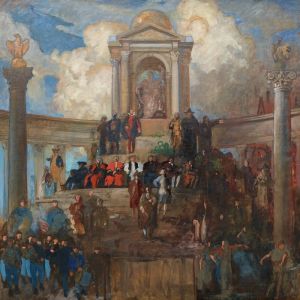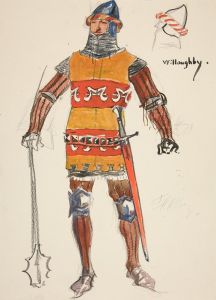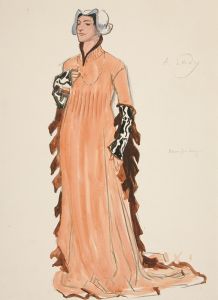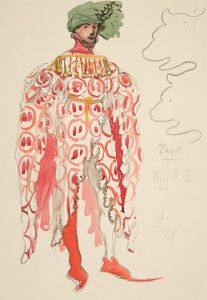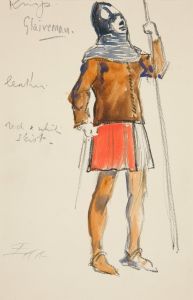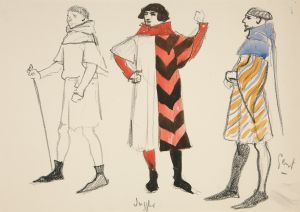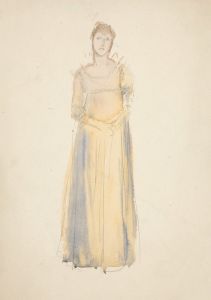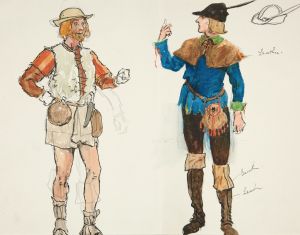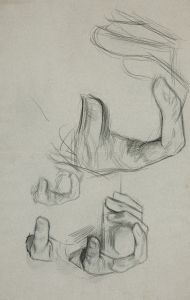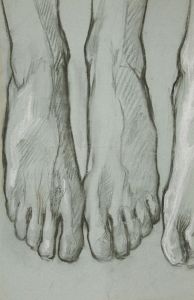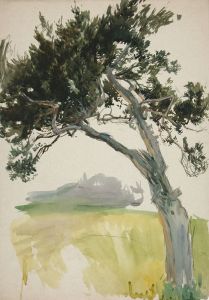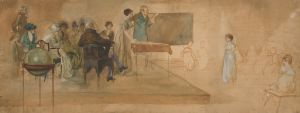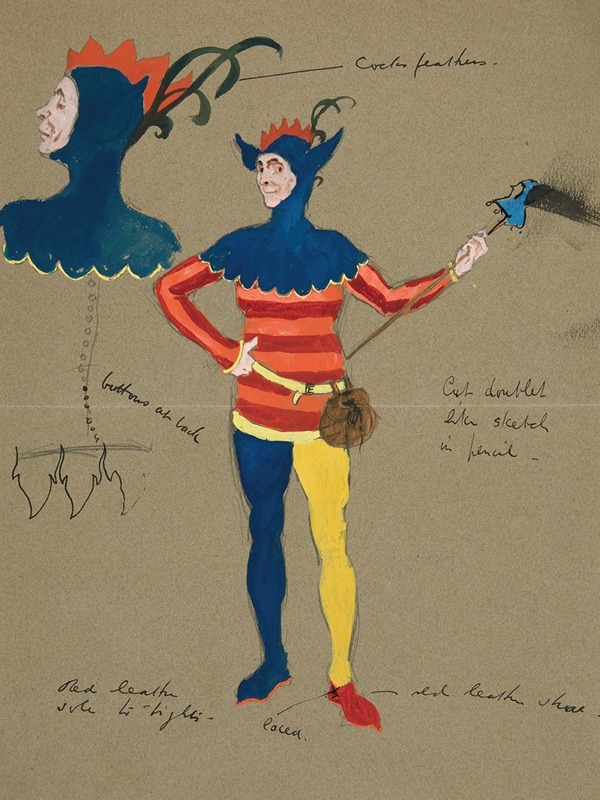
Jester, costume sketch for Henry Irving’s Planned Production of King Richard II
A hand-painted replica of Edwin Austin Abbey’s masterpiece Jester, costume sketch for Henry Irving’s Planned Production of King Richard II, meticulously crafted by professional artists to capture the true essence of the original. Each piece is created with museum-quality canvas and rare mineral pigments, carefully painted by experienced artists with delicate brushstrokes and rich, layered colors to perfectly recreate the texture of the original artwork. Unlike machine-printed reproductions, this hand-painted version brings the painting to life, infused with the artist’s emotions and skill in every stroke. Whether for personal collection or home decoration, it instantly elevates the artistic atmosphere of any space.
Edwin Austin Abbey was an American artist known for his illustrations and paintings, particularly those depicting Shakespearean subjects and other literary themes. One of his notable works is the costume sketch for a jester in Henry Irving’s planned production of "King Richard II." This sketch is a part of Abbey's broader body of work that reflects his deep engagement with theatrical and historical themes.
Henry Irving was a prominent English stage actor in the late 19th and early 20th centuries, renowned for his Shakespearean roles and his innovative approach to theater production. His planned production of "King Richard II" was part of his efforts to bring Shakespeare's works to life with a high degree of historical accuracy and artistic flair. Although this particular production of "King Richard II" by Irving did not come to fruition, the preparatory work, including Abbey's costume sketches, provides valuable insight into the theatrical practices and artistic collaborations of the time.
Abbey's sketch for the jester costume is a testament to his skill in capturing the essence of a character through detailed and expressive design. The jester, a traditional figure in medieval and Renaissance courts, was often depicted as a colorful and whimsical character, providing comic relief and commentary within the narrative. Abbey's interpretation likely reflects these attributes, emphasizing the jester's role within the play and the broader historical context.
The collaboration between Abbey and Irving highlights the intersection of visual art and theater during this period. Abbey's work was not limited to costume design; he was also involved in creating set designs and other visual elements that contributed to the overall aesthetic of theatrical productions. His attention to detail and historical accuracy made him a sought-after artist for such projects.
Abbey's involvement in Irving's theatrical endeavors is part of a larger trend during the late 19th century, where artists and theater practitioners sought to elevate the status of theater as a serious art form. This period saw a renewed interest in Shakespearean drama, with productions striving for authenticity in both performance and visual presentation. Abbey's sketches and designs played a crucial role in this movement, as they helped to create immersive and historically informed theatrical experiences.
While the specific details of Abbey's jester costume sketch for "King Richard II" are not extensively documented, the work remains an important example of his contribution to the arts and his collaboration with one of the era's most influential theatrical figures. Abbey's legacy as an artist is marked by his ability to blend historical research with creative expression, resulting in works that continue to be appreciated for their artistic and cultural significance.





